Employer Brand Headlines: The "Day by Day" Edition (#91)
My mission: Help you understand your employer brand better and make it work for you.
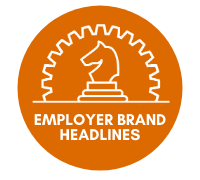
In this issue
Imagine no possessions
Reassessing brands
Employee voice
Audio beyond Clubhouse
The big idea
For a mercifully short time, I was listed as an economics major in college (before getting smart and switching to the far more lucrative political science department).
One of the interesting things I learned (other than most economic theory can never be proven) is a concept called the Tragedy of the Commons. It is the idea that when some a resource is “commonly held” (think: air, a park, fish in the ocean, etc) without formal rules to govern them (laws, someone in charge of it, someone to enforce guidelines, etc), that resource often gets “depleted” (economist-speak for “used up to the point of being worthless”).
Think of a library: properly respected, the books and materials can exist and be used by everyone… forever. But if a few people decide to write in the books, pull pages out of the reference materials, or just throw things into the trash instead of returning them to the shelf, the resource gets ruined in a hurry. Despite 99% of the users abiding by norms, the 1% can destroy a library’s value in no time.
It’s called a “tragedy” because, without meaningful rules on usage, a resource designed to be used by everyone for everyone’s benefit ends up being used by no one.
I was thinking of this when someone asked me where I thought employer brand “lived.” Previously, I’ve talked about how because employer brand is about the entire company, it needs to be about the whole company, but placing it in a specific home ghettoizes somewhat, making it a “recruiting thing” or a “comms thing.” My theory is that the best way to get to the point where you can engage with and support all aspects of the team is to start with a dual-citizenship where possible: If you’re used to being in TA, go work for a company where EB is n Marketing or Comms.
But the reality is that while the employer brand (as a function) sits with you, the employer brand (as an idea) needs to be owned by everyone. You can’t drive the brand forward if you’re the only one talking about it. You need to influence everyone to step up and share their perspectives.
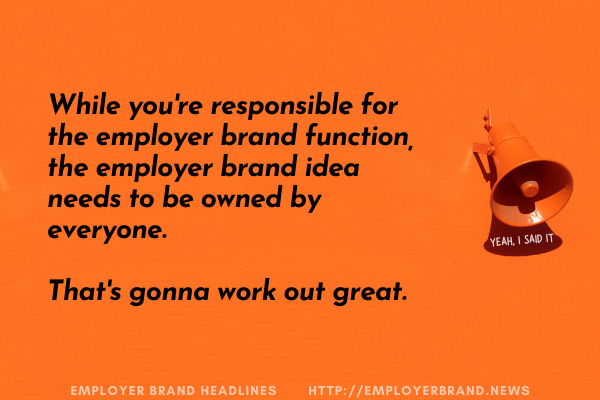
But that means your brand, which you are responsible for (but without any real authority, natch!) but is really being created and used by everyone else, is in danger of the same fate as over-fished waters: everyone does with it what they will, taking from it as needed and returning very little.
The tragedy of the commons can be averted one of two ways: Private property or increase the skin in the game.
Private property never gets depleted because it has value to its owner: they take care of it to ensure that it stays in working condition. You could take that same approach and lock down the brand: control all usage of the brand, make everyone go through you before leveraging and engaging with the brand. In a way, that’s how we used to do it before the internet and Glassdoor changed things. We could control the flow of information, making sure the brand wasn’t used improperly or depleted. But since it’s 2021, it doesn’t feel like a smart idea to try and move the clocks backward.
Alternatively, you could spend more time making sure people who benefited from the brand (leadership growing the business, hiring managers looking for talent, staff wanting to work for people who align to the values and goals… so, everyone) can see how they can support it and destroy it.
All too often, we act like paupers in a Dickens novel, begging with hat in hand, asking the rich to please spare a farthing for the employer brand, as if you’re some sort of charity case. But are you?
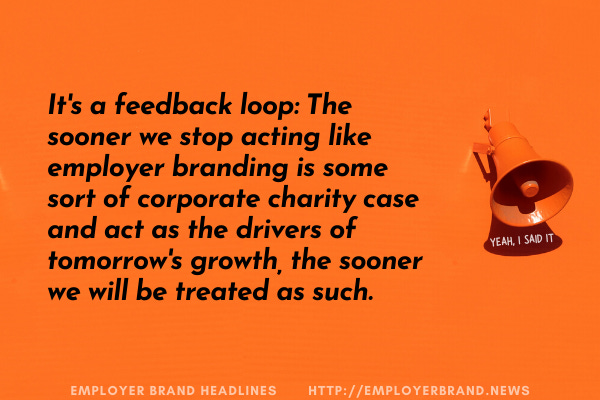
Aren’t you elevating the kind of people available to hire? Aren’t you giving recruiters the support they need to poach from great companies? Aren’t you turning vague corporate values into something people can see and do every day?
It’s a feedback loop: The sooner we stop acting like employer branding is some sort of corporate charity case and act as the drivers of tomorrow’s growth, the sooner we will be treated as such.
Headlines!
Understanding Brand Values in the Era of Reassessment
“Unlike people, however, companies don’t have innate consciousness. The values and beliefs people adopt in their lifetime are often adopted subconsciously.”
Lessons in simplicity strategy
A strategy that’s complicated is a plan (and a wishful one at that). Strong strategy is always simple, so take some notes on avoiding the pitfalls of bad strategy.
www.strategy-business.com • Share
Design Systems with Your Most Vulnerable Users in Mind
Hey look: the rest of your company is designing their processes around their most valuable customers. So maybe you really could build your entire recruiting/application process around the handful of people you actually want to hire.
Everyone thinks their employees are ‘engaged’ (define to suit), but the stats don’t bear that out. Getting your staff to co-orient around your story and talk more is NEVER easy. But you still have to take it seriously.
3 ways HR can jumpstart the employer brand
You really don’t see HR called out often as a tool EB can use, do you? But this is where policy decisions are made that impact what you can talk about, so go make friends.
Writing Is Much Too Important to Be Left to Copywriters
“The fact is, anything your people write tells its readers what your company’s like.” Boom.
6 Strategies for Leading Through Uncertainty
It has to mean something that the ways to lead through uncertainty (embrace not knowing, don’t go alone, zoom out, let go of perfection) are pretty much the credo of EB-ers.
The Future of Social Audio: Startups, Roadmap, Business Models
Clubhouse is valued at $1B, so its safe to say that the audio-only sector is taking off. How can you take advantage? Here’s some big big thinking.
Programmatic market a 'mess' with half of money still not reaching publishers
If you’re investing in programmatic ads to reach your audiences, this is worth reading. In fact, it’s probably the tip of the iceberg.
How Leaders Get in the Way of Organizational Change
Strengths quickly become our weaknesses. The person who can drive change in your org is also the person who keeps it from happening correctly.
Google’s answer to the problems of open-plan offices? Inflatable walls
Please be a joke please be a joke please be a joke… sigh. It’s not a joke.
Quick hits
Tip of the week
There are probably a dozen things that get automated around you, from the boilerplate that gets tacked onto your job postings to dispensation letters to candidates. Given hope many people these automated messages reach, what’s the impact on making one of these just 10% better? Do that.
Inside the fortune cookie
“There are no solutions, only trade-offs.” -Thomas Sowell
Thanks, everyone!
Don’t forget to check out the 700+ link archive.
And as always, when you reply to this email I will read your questions and comments. Is there any article I should be commenting on? A book? A podcast? Is there something you what to know? How can I help? Just reply to this email and it comes directly to me.
Cheers and thanks!
-James Ellis (LinkedIn | Twitter | Podcast | Articles)
Where the subject line came from:
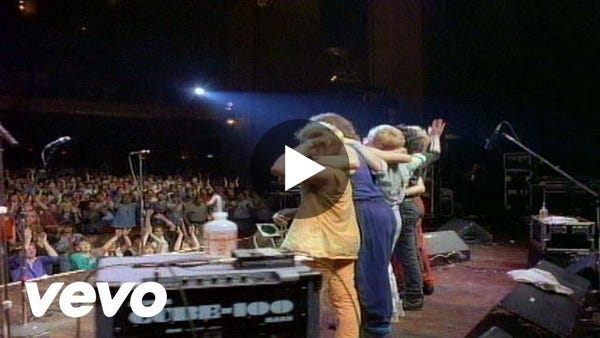
The Hooters - Day by Day (Video)
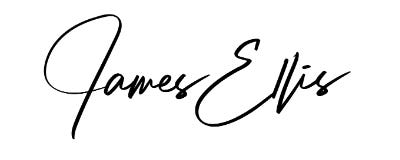
By James Ellis, Employer Brand Nerd
In a sea of content, how do you stay up to date on employer branding news? How do you know what's worth reading and what's just a waste of time?
So glad you asked! Here's a weekly digest of the best content to make you smarter about employer branding, curated by James Ellis.
In order to unsubscribe, click here.
If you were forwarded this newsletter and you like it, you can subscribe here.
Powered by Revue
James Ellis, 421 W Melrose, Chicago, IL 60657




